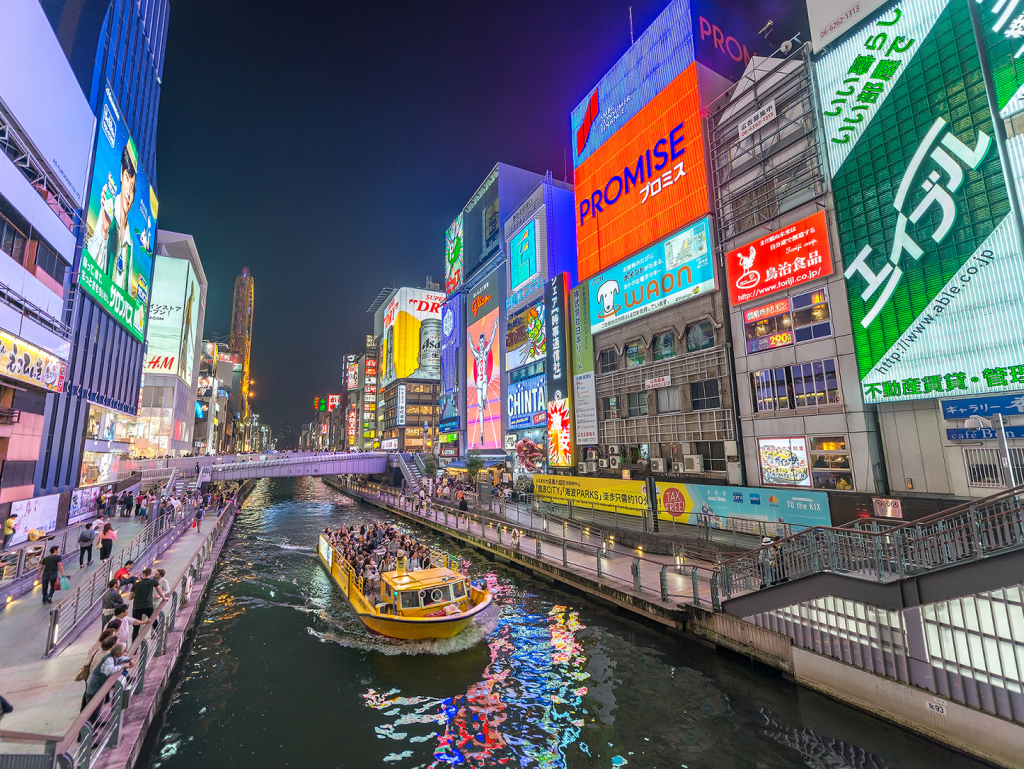We spend two days touring Osaka, which inspires enough eating, walking, chatting, and coffee drinking to live up to its nickname
DAY ONE
It’s a gorgeous morning when we arrive at Osaka Station; that kind of morning where you just want to gratefully stop for a moment and savor the possibilities of what may unfold during the day ahead. Descending the escalators into Umekita Plaza, we are immediately beckoned by the architecturally intriguing Osaka Ship Hall – and the cool fountain art right outside of it – to stop and have a coffee at one of its outside terrace tables while planning our day.
Not wanting to miss a minute of the glorious weather, we decide that we are energized enough to go on foot to the Dotonbori neighborhood to take a leisurely wander among its streets – about an hour’s walk, says our GPS. Along the way, we take note of that famous Kansai-Kanto divide we’ve heard so much about. Sure enough, a few moments on the streets make it clear that there is definitely more human engagement here than underneath that curtain of distant anonymity that seems to cloak much of Tokyo. This is confirmed shortly thereafter when a woman rushes up to us to graciously gift us with some small sensu (folding fans), saying that it made her happy to see foreigners visiting her city – a scene we are pretty sure would have been far less likely to occur in Tokyo.
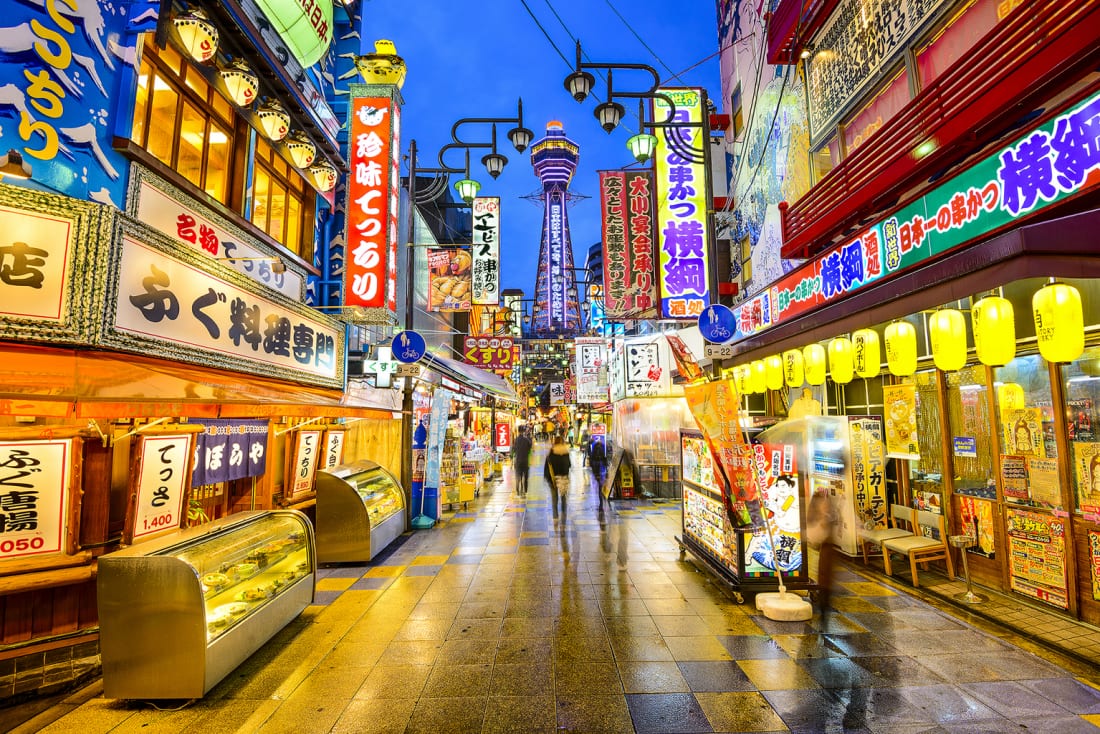
Dotonbori shopping and entertainment district
The Bright Heart of Osaka
We arrive in the Dotonbori area to find a bustling neighborhood with every kind of shop imaginable, along with street announcements in Korean and Chinese in addition to Japanese, and all of the Osaka street food specialties we expected: takoyaki (battered octopus balls), kushikatsu (deep-fried skewered meats and veggies), kani (crab), and okonomiyaki (savory pancake). We decide to take a lunch at a restaurant overlooking the Dotonbori Canal, where we go for Osaka-style okonomiyaki (i.e., the batter mixed together with the ingredients before grilling, rather than layering it like they do in Hiroshima). The dishes arrive in cast iron skillets, mine oozing cheese and mentaiko (seasoned cod roe) and drizzled with a tightly patterned crisscross of mayonnaise. My companion orders the more standard grilled pork. The lunch is scrumptious and we pair it with ice-cold beers. After all, this is beer garden season, and it’s not like we need a lot of convincing to day drink on vacation, right?
We continue our stroll along the canal, watching boats cruise by – one of them blasting dance music – while we take in the fantastic riverside café culture. We don’t know if these are mostly tourists, or locals, or a mix of both, and honestly, it doesn’t really matter. Today, is all about enjoying the vibe of the beautiful setting.
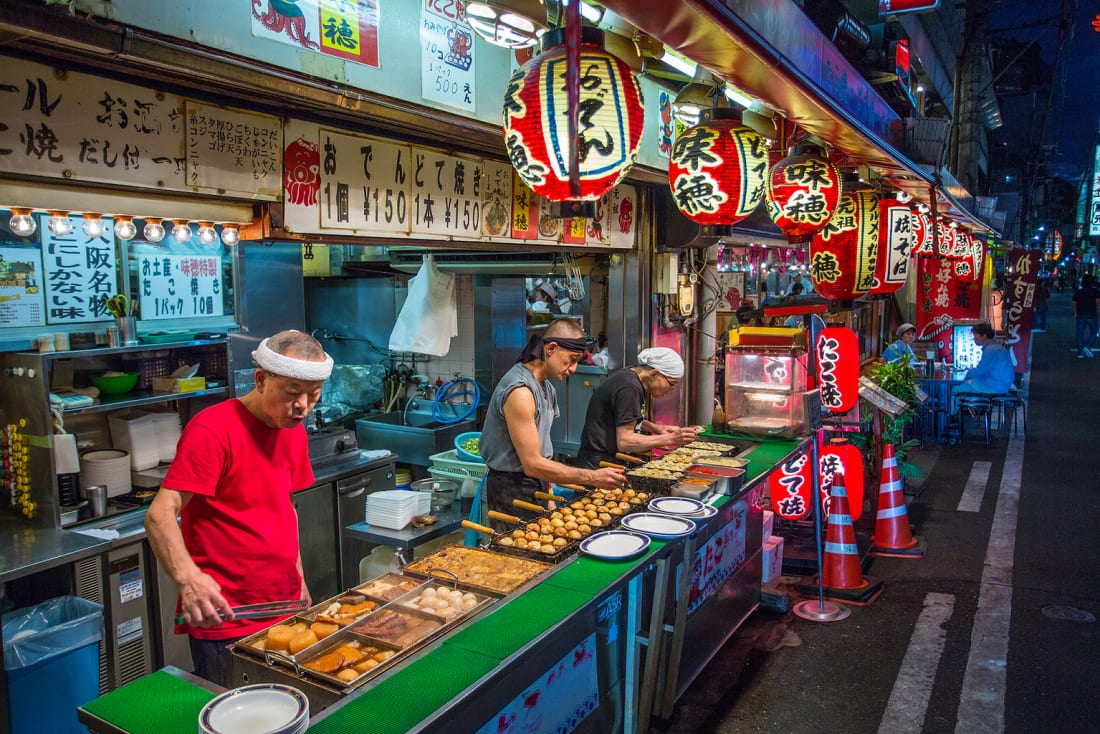
Osaka food vendors
That Osaka Vibe
Hozenji, a quaint, historic temple, is tucked away in the side streets of Dotonbori. We stop by to pay our respects to the Mizukake Fudo – a statue of the Buddhist god Fudo Myo-o, which now stands covered in moss from all the years of dousing. Afterward, we stroll down the atmospheric Yokocho alley, with its collection of lantern-fronted izakaya (Japanese-style pubs).
Somewhat fatigued at this point by the combination of sun and having covered so much ground on foot, and still satiated by our enormous late lunch, we decide to make it an early night. However, not before dropping by the Umeda district to check out its lively evening scene. We stop by a bar-slash-vegan restaurant called WaaGwaan (a Jamaican greeting meaning “What’s going on?”) that caters to the LGBT community (but is open to all), and has photos of Bob Marley covering its walls. The cocktails are tight, the locals are friendly, and the spiced soy meat and crackers that we end up having as an evening snack are delightful. A fine end to a fantastic day.
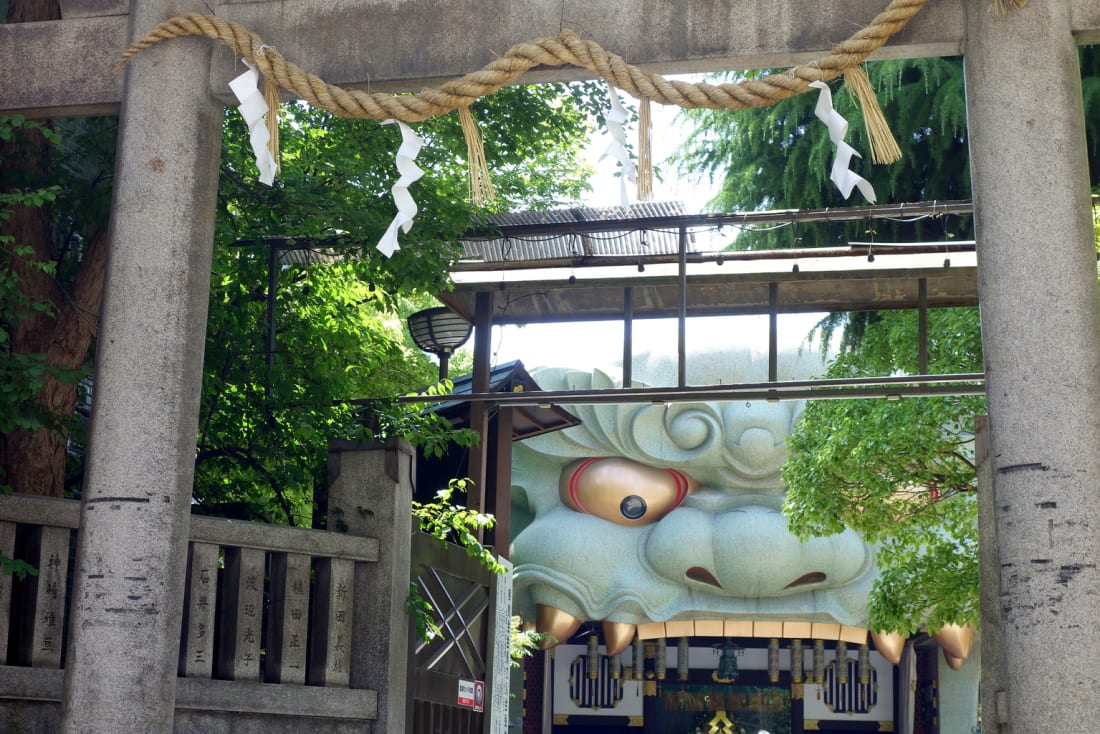
Nambayasaka shrine
DAY TWO
Some have called Osaka the Venice of the East, and we decide to again combine our sun worshipping with our sightseeing the next morning by strolling along more of Osaka’s waterways on our way to brunch at Cubierta, the rooftop restaurant at the Biotop complex in Nishi-ku (If we are giving the impression that food was a central aim of our trip, we are guilty as charged). Covered in plants and featuring stylish, yet simple, wooden tables, the restaurant is a perfect location to enjoy a coffee, New York-style pizza, and Osaka’s relaxed vibe. Afterward, we browse the other offerings in the complex, which include an urban gardening-themed nursery, and a shop specializing in fashion and natural lifestyle products.
For our afternoon sightseeing activity, we are torn between visiting Osaka Castle or the Nambayasaka Shrine – known for its 12m-tall building shaped like a lion’s head. A toss of the coin determines that it will be the latter, and we decide that visiting a Shinto shrine would be only fair since we visited a Buddhist temple the day before. Upon arriving at the shrine, however, we are surprised and intrigued to learn that both religions were once combined here. The shrine was home to an ox-headed Buddhist god – Gozu Tennou, who was responsible for offering protection from epidemic diseases – until Buddhist-Shinto fusion was prohibited by Meiji nationalists in 1968.
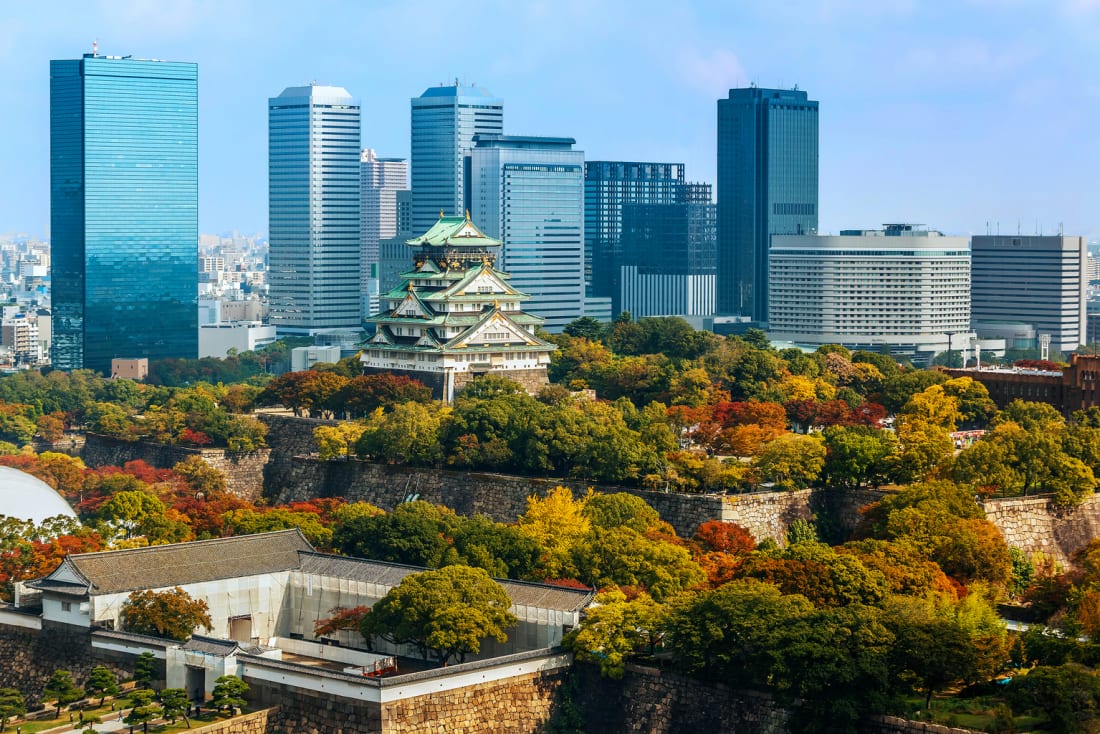
Osaka Castle
“Quirky and Completely Lovable”
Not quite ready to call it a day, we head to the Umeda Sky Building for an exquisite 360-degree view of the cityscape from the Floating Garden Observatory on the 40th floor, which does not disappoint. We end the day like an Osakan, browsing the offerings at the Takimi Koji food street, which is located in the basement of the building, and has been recreated to resemble 1920s Taisho. We eventually decide upon a humble, and yet tasty, bowl of local ramen. As we happily slurp along, my companion and I confirm that we are both basically thinking the same thing: this is one busy, quirky, and completely lovable city.
Updated On December 26, 2022

